Ride the Rails – Journal Entry #27
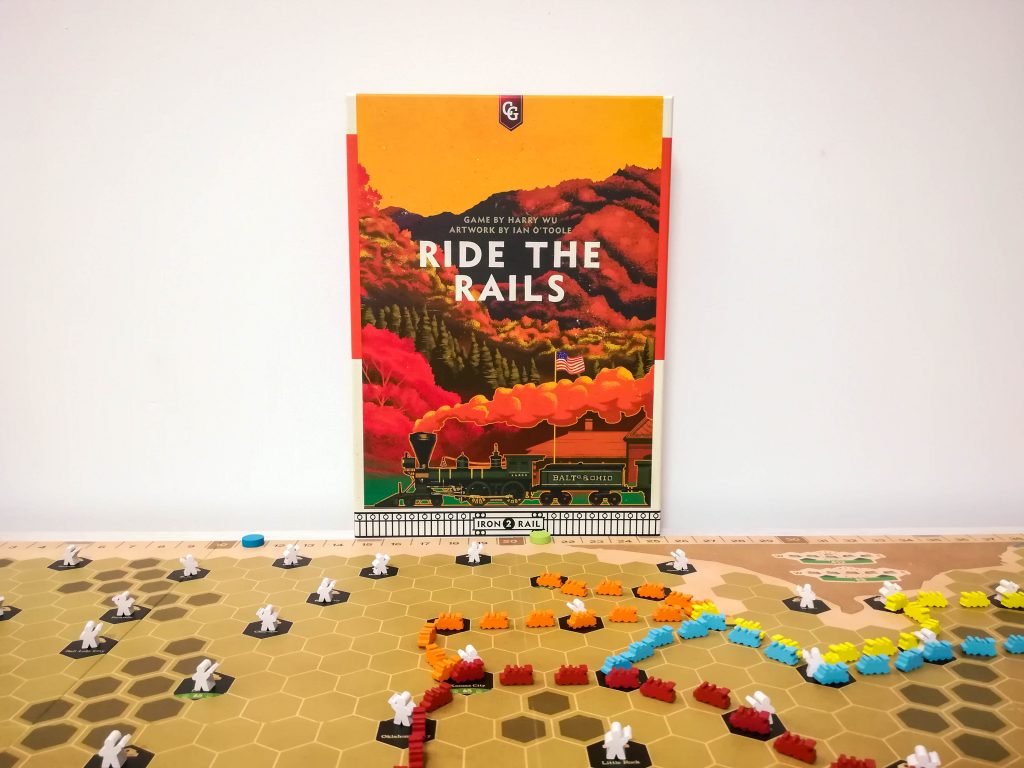
I’ve had Ride the Rails on my radar for a long period. I first found out about it from a good friend of mine. I was in the fever of discovering new game genres and I read about 18xx games somewhere and instantly thought “this sounds fun!”, so I asked my friend about them. Little did I know that 18xx games are more complex than they seemed to me and he recommended me to try Ride the Rails as my first train game.
So here I am, many months later, writing about it. I finally got a copy of it and boy, I am so happy I decided to start with it! Ride the Rails is the second game in the Iron Rail series from Capstone Games and is by far the game I’ve been hyped about the most lately. It is a fun train game, great for people who want to get into train games but have no idea what game to pick first. Everything is pretty straight forward but the decisions you take are really important. It implements the classic mechanisms you’ll find in 18xx a bit differently, but I’m sure that shouldn’t be a problem even for avid 18xx players.
But how do you Ride the Rails?
For a train game, the rules are pretty simple. It plays over 6 rounds, each split into three main phases: taking shares, building railroad tracks, and riding the rails. In the beginning, players can only take shares from the red and blue railroads, but every subsequent round unlocks a new railroad color that you can opt for. Each railroad can start only in cities that display its color and every locomotive placed afterward must be connected adjacently to at least one other locomotive of the same color.
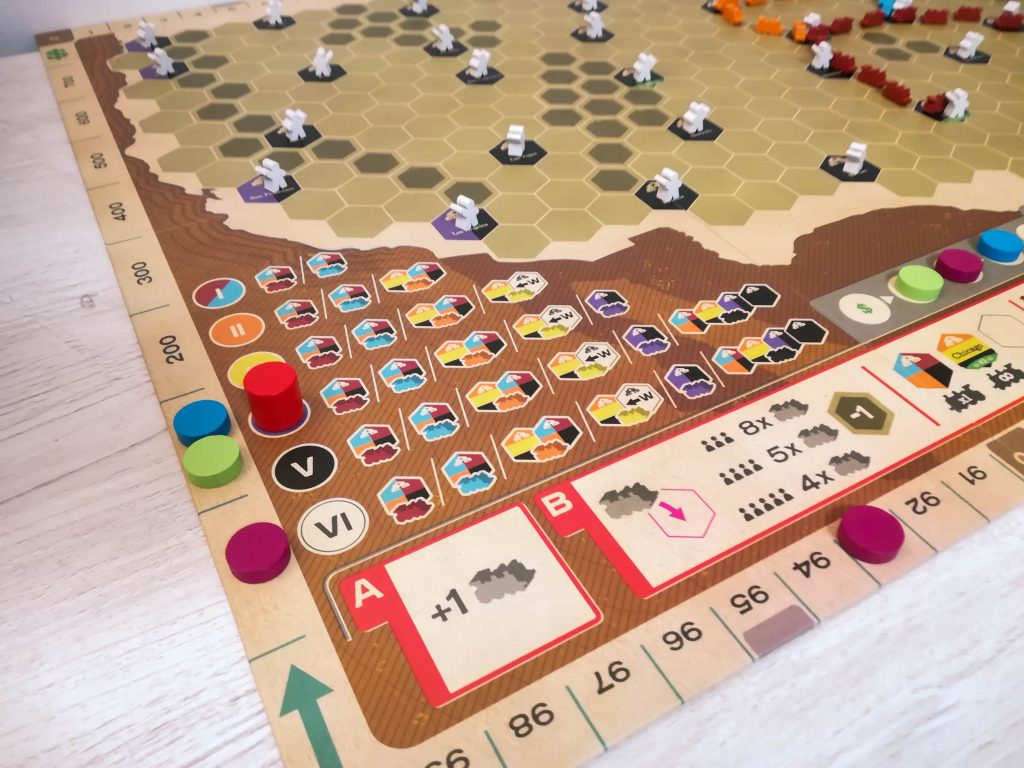
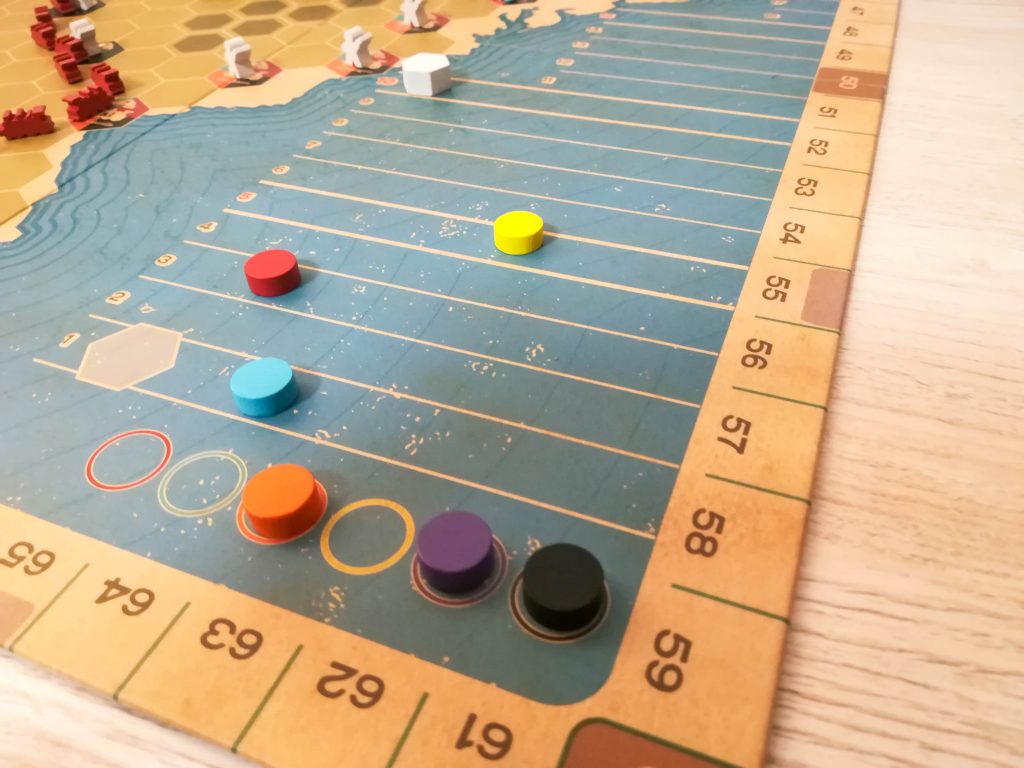
On each round, players take shares in reverse turn order. When taking a share, each player chooses one of the available railroads, takes a locomotive of that color, and puts it on his board to represent an owned share. They can now build railroads of that color on the map during the second phase of the round. This is done by taking locomotives from the reserve and placing them on the board.
The maximum number of locomotives you can place depends on the number of players. You are free to place whatever color locomotives you want on the board, as long as you hold shares of that color and you do not exceed the maximum number of locomotives allowed per turn. Keep in mind that some of the cities will award you money (which are also Victory Points in this game) when you first connect a railway to them, so try and take advantage of this. There’s also a Transcontinental bonus if you manage to connect the East Coast and the West Coast with a single line of different railroads!
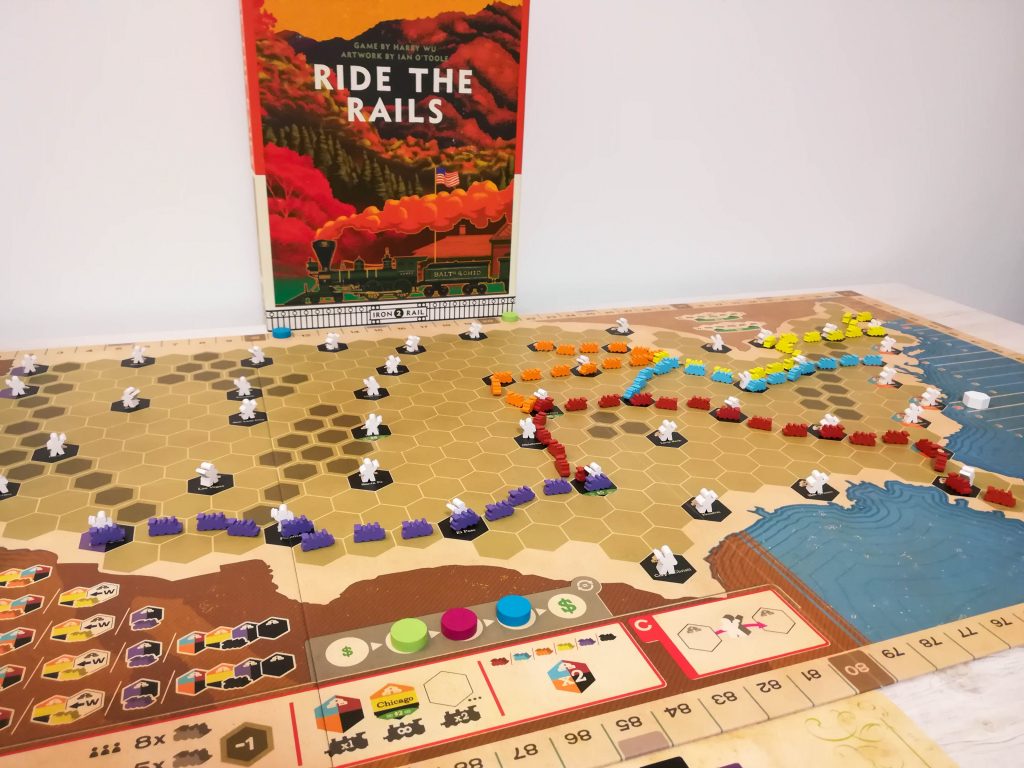
The third phase of the round represents riding the rails. In turn order, each player chooses a passenger and transports it from one city to another, deciding both the starting and the ending locations. They trace the route and each player who owns shares in the railways that were used will get dividends based on how many links of that color were passed and on how many shares they own. The active player will also be awarded extra money based on how many cities the passenger visited on his journey.
After each player finished their turn, a new round begins and the turn order is adjusted based on how much money everyone has – players will now take turns in ascending order of their money. This goes on until the 6th round is finished. At that point, the game ends and the player with most money is the winner.
My thoughts on Ride the Rails
Train games do not have a reputation for looking good. Usually, the design is focused more on the mechanics and less on the aspect of the game. However, the same can not be said about Ride the Rails. As usual, Ian O’Toole’s art is gorgeous and the graphic design is functional. It’s easy to follow what happens during the game and you won’t get lost in the bits and pieces. Capstone’s idea of picking up Winsome cube rail games and reprinting them with different artwork, revised rules and better components was a great decision, and that applies to the entire Iron Rails series.
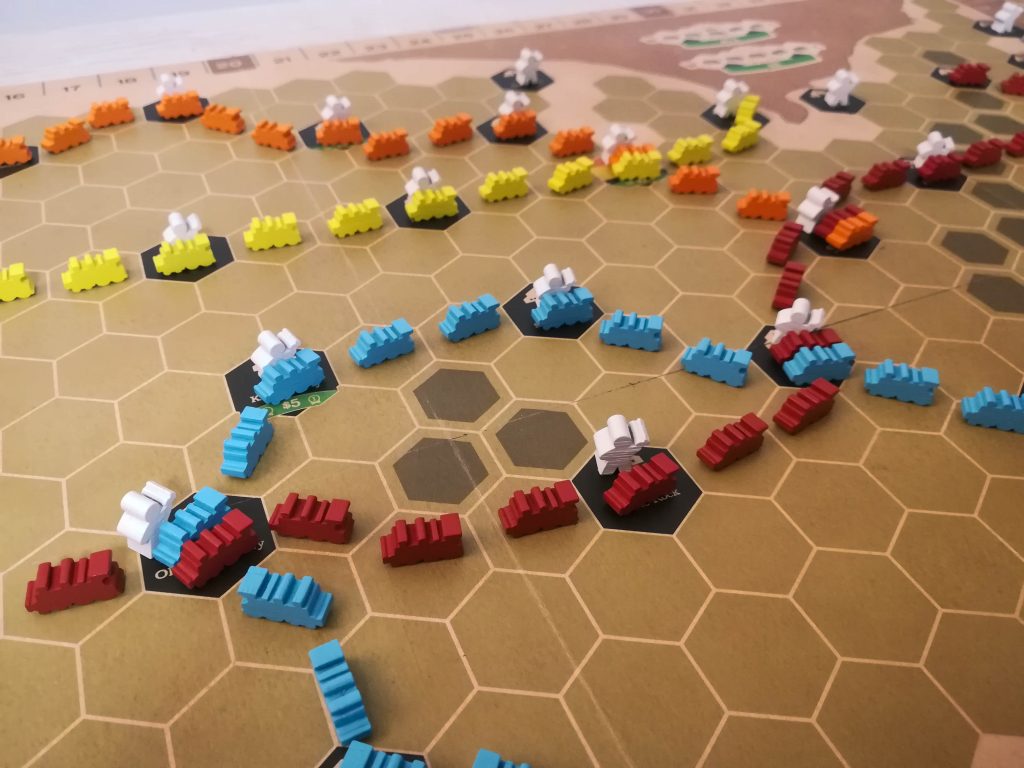
I found Ride the Rails to be very different from one match to another, depending on the players’ strategies. I enjoy how the game progresses from a simple game at the beginning, when all you have to do is choose a town to start your railroad and then connect it to other towns, to some sort of an optimization puzzle at the end, when you have multiple railroads available to invest into and you have to find the best route to ride to gain the most profit.
Speaking of that, you should always pay attention to other players’ shares when riding a route. Keep in mind, when riding the rails, every player who owns shares in those railroads will be awarded money. It’s easy to forget that when choosing the route to ride and it may end up being more beneficial to other players than to you. It’s impossible to pick a route that does not award money to other players since most railways will have at least two shareholders, but you should at least try and find one route that awards them the least money possible, while still giving you a great amount.
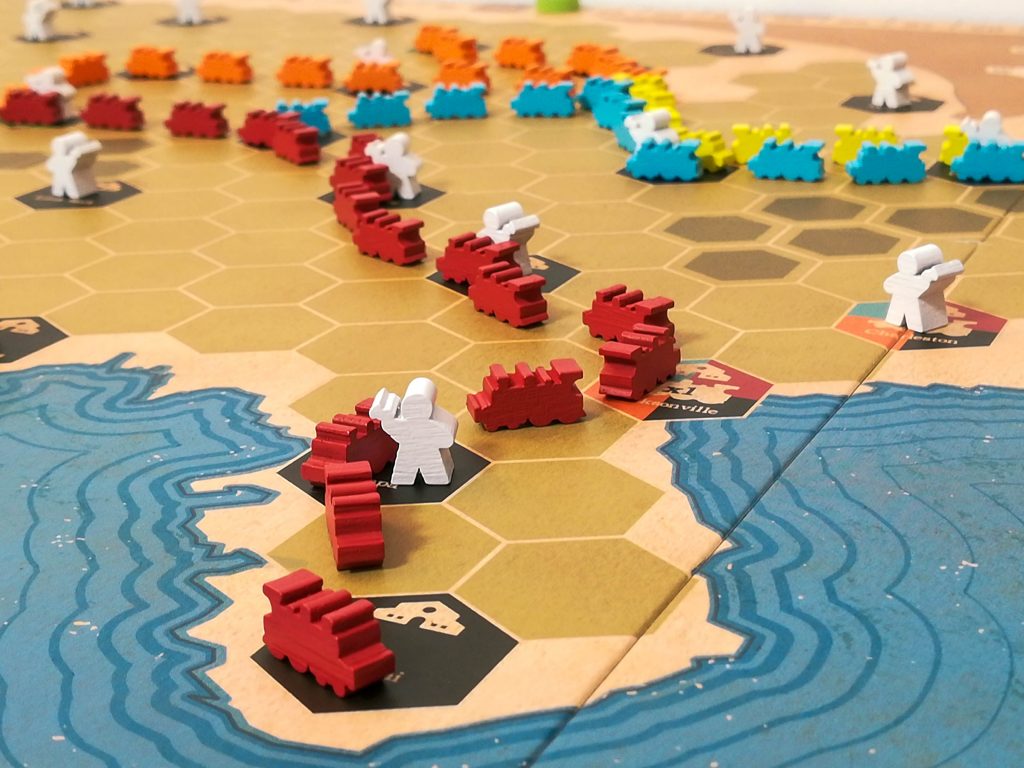
The game works great at all player counts. There’s not much downtime during player turns and there’s a lot of player interaction determined by the way shares work. You can decide to work together with another player, extending the same railroad and so both of you benefit when riding the rails. You can also try and interfere with someone’s plans by finding a way to force them to ride rails that you hold shares of.
One thing that I found really interesting is that you use locomotives to represent your shares. This means that the more people buy shares in a company, the fewer trains they’ll be able to place on the board for that company. That’s a smart way of forcing people to branch out and buy shares in other railways too. Never focus on just one railway or you may end up not being able to build railroads on your turn. I once tested how well this works and the result was as expected. I was getting many points in the beginning when people were riding my railway, but sooner than later the passengers on my train line were gone and I was left with no passengers to transport. No passengers that’d award me money, at least.
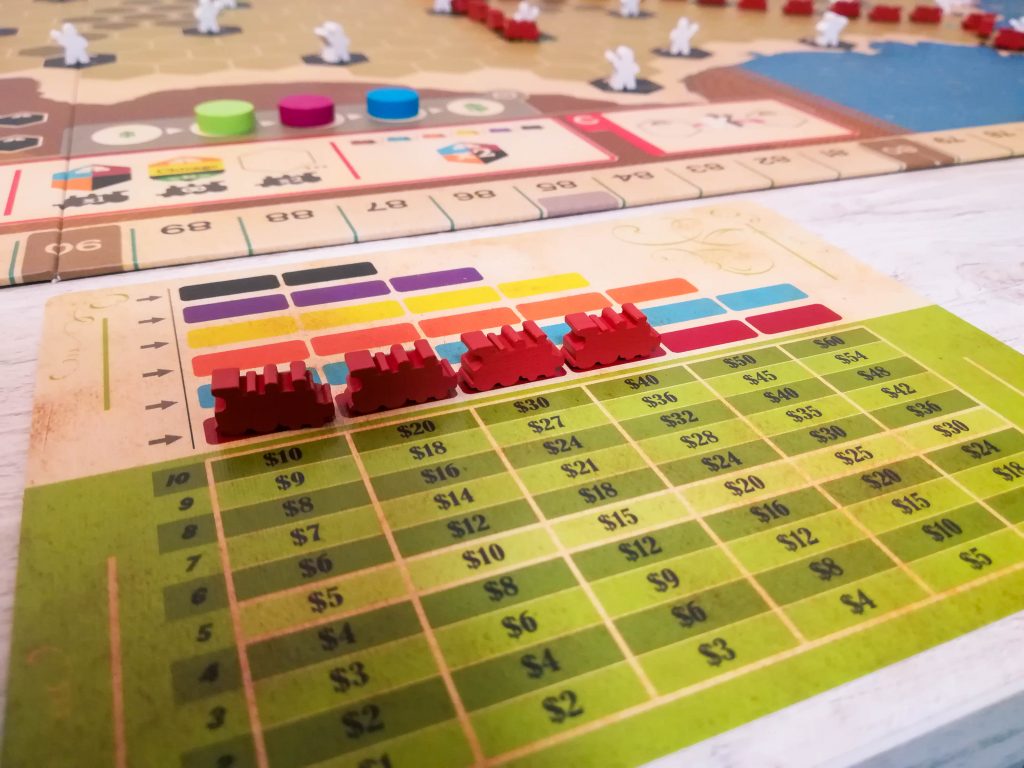
Conclusion
Ride the Rails is a great choice to get into train games. The shares aspect of the game is really good, and unlike in most train games, there are no auctions, so you won’t have to bother finding the right price when buying a share. Also, the payment of the dividends is implemented differently from your usual games train games, by transporting passengers and paying money to everyone who owns shares in the railways you passed through. It plays fast, takes about an hour, maybe an hour and a half for a 5 players game, and it shouldn’t take you longer than 10 minutes to teach it to new players.
As I said in the beginning of this post, this is the second title in the Iron Rail series, but now I’m really interested to try both it’s predecessor (Irish Gauge) and successor (Iberian Gauge). I am also very curious to try the map packs for this game, as I’ve read that all four maps come with new challenges. So don’t hesitate to try Ride the Rails, as I’m sure it will not disappoint you!
Useful info
Designer: John Bohrer
Publisher: Capstone Games
Players: 3-5
Time: 45-60 min
Times played: 7
Full disclosure: A copy of Ride the Rails was provided by the game publisher.
Did you like the review? Follow me on my Instagram page where I post daily photos of games I play and other things. You can also support me on Patreon to gain access to various special content, such as game unboxings, first impressions, polls to decide what games to cover next, and early access to reviews!



Sounds like a fun game!